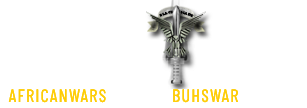Breytenbach attended the Army Gymnasium in 1950, and was awarded the Sword of Peace in 1953 and joined the Royal Navy Fleet Air Arm after serving in the Armoured Corps and saw service in the Suez Crisis in 1956. He rejoined the South African Defence Force in 1961 and soon after completed one of 1 Parachute Battalion’s courses. Fritz Loots commissioned him to organise 1 Reconnaissance Commando in 1971.
In 1975 Breytenbach led Operation Savannah, the South African Defence Force (SADF) covert intervention in the Angolan Civil War. The remnants of this group became the elite 32 Battalion, or “Buffalo Battalion”. He attended Staff College in 1977 and was promoted to colonel. In 1978, he led the SADF air assault on Cassinga, and would later continue for long contest opposing versions of the event in the press.
He became senior staff officer for operations at Northern Transvaal Command and commanded 44 Parachute Brigade from 24 September 1980 to 31 December 1982. He founded the SADF guerrilla school, which he commanded until his retirement.
Breytenbach retired from the military in 1987, and has written a number of books since then. He is the brother of South African poet and writer Breyten Breytenbach and of war correspondent/photographer Cloete Breytenbach. Cloete, who took an iconic photograph of Nelson Mandela and Walter Sisulu on Robben Island in July 1964 after being given permission to do so by then-South African Prime Minister John Vorster, died in 2019. Breyten and Jan Breytenbach held strongly opposing political viewpoints, as his brother opted for a left-wing approach. This influential family effectively covered the political spectrum.
At the time of his death in June 2024, the George Herald described Jan Breytenbach as “one of the greatest soldiers of our time.








